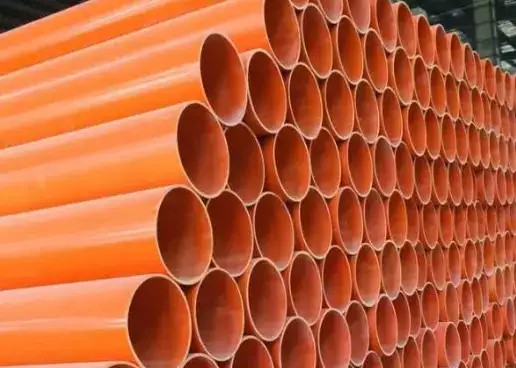Polyvinyl Chloride (PVC) pipes are widely used in various industries for their durability, cost-effectiveness, and ease of installation. A critical aspect of PVC pipe selection is understanding its pressure rating, which indicates the maximum internal pressure the pipe can safely withstand. This guide delves into the factors influencing PVC pipe pressure ratings, calculation methods, and practical considerations for their application.

1. What Is PVC Pipe Pressure Rating?
The pressure rating of a PVC pipe refers to the maximum internal pressure the pipe can handle without risk of rupture or failure. This rating is typically expressed in pounds per square inch (psi) and is determined based on factors such as pipe dimensions, material strength, and safety considerations.
2. Factors Affecting PVC Pipe Pressure Ratings
2.1 Pipe Schedule
The schedule of a PVC pipe indicates its wall thickness, with higher schedule numbers corresponding to thicker walls and higher pressure ratings. Common schedules include Schedule 40 and Schedule 80.
2.2 Pipe Diameter
Larger diameter pipes generally have lower pressure ratings due to increased wall stress. Conversely, smaller diameter pipes can withstand higher pressures.
2.3 Material Properties
The quality of the PVC material, including its cell classification and hydrostatic design stress (HDS), influences the pressure rating. Higher HDS values indicate stronger materials capable of withstanding higher pressures.
2.4 Temperature
PVC pipe pressure ratings decrease as the operating temperature increases. For instance, at 73°F (23°C), a Schedule 40 PVC pipe may have a pressure rating of 280 psi, but at 140°F (60°C), this rating could drop significantly.
3. PVC Pipe Pressure Rating Standards
Various standards govern PVC pipe pressure ratings to ensure safety and reliability:
-
ASTM D1785: Standard Specification for Poly(Vinyl Chloride) (PVC) Plastic Pipes.
-
ASTM D2241: Standard Specification for Poly(Vinyl Chloride) (PVC) Pressure-Rated Pipe (SDR Series).
-
AWWA C900: Standard for Polyvinyl Chloride (PVC) Pressure Pipe and Fabricated Fittings, 4 In. Through 60 In. (100 mm Through 1500 mm).
These standards provide guidelines for material properties, dimensions, and pressure ratings to ensure consistent and safe use of PVC pipes.
4. Calculating PVC Pipe Pressure Ratings
The pressure rating can be estimated using Barlow’s Formula:
P = (2 * t * S) / D
Where:
-
P = Internal pressure (psi)
-
t = Wall thickness (inches)
-
S = Allowable stress (psi)
-
D = Outside diameter (inches)
This formula provides a theoretical pressure rating, which should be verified against industry standards and safety factors.
5. PVC Pipe Pressure Rating Charts
| Pipe Schedule | Diameter (inches) | Wall Thickness (inches) | Pressure Rating at 73°F (psi) |
|---|---|---|---|
| Schedule 40 | 1/2 | 0.088 | 450 |
| Schedule 40 | 1 | 0.140 | 280 |
| Schedule 80 | 1/2 | 0.147 | 630 |
| Schedule 80 | 1 | 0.179 | 400 |
*Note: Pressure ratings decrease with increasing temperature.
6. Practical Considerations
-
Safety Factors: Always apply appropriate safety factors when designing systems to account for unexpected pressures and environmental conditions.
-
Temperature Effects: Consider the operating temperature range and apply derating factors to ensure the pipe’s integrity.
-
Installation Practices: Ensure proper installation techniques to avoid damage and maintain pressure integrity.
7. FAQs
Q1: How does temperature affect PVC pipe pressure ratings?
As temperature increases, the material strength of PVC decreases, leading to a reduction in pressure ratings. For example, a Schedule 40 PVC pipe rated at 280 psi at 73°F may only be rated at 62% of that value at 100°F.
Q2: What is the significance of pipe schedule in pressure ratings?
The pipe schedule determines the wall thickness, which directly influences the pressure rating. Thicker walls allow the pipe to withstand higher internal pressures.
Q3: Can PVC pipes be used for high-pressure applications?
Yes, but it’s essential to select the appropriate schedule and diameter, and consider temperature effects. For high-pressure systems, Schedule 80 pipes with higher pressure ratings are recommended.
Q4: Are there international standards for PVC pipe pressure ratings?
Yes, standards such as ISO 4422 and EN 1452 provide guidelines for PVC pipe pressure ratings in various regions.
Q5: How can I determine the pressure rating of an existing PVC pipe?
Check the manufacturer’s markings on the pipe, which typically include the schedule, pressure rating, and applicable standards. If markings are unavailable, use Barlow’s Formula with known dimensions and material properties.
Conclusion
Understanding PVC pipe pressure ratings is crucial for ensuring the safety and efficiency of piping systems. By considering factors such as pipe schedule, diameter, material properties, and temperature effects, professionals can make informed decisions when selecting PVC pipes for various applications.
References:
- ASTM D1785 – Standard Specification for Poly(Vinyl Chloride) (PVC) Plastic Pipes
- AWWA C900 – Standard for Polyvinyl Chloride (PVC) Pressure Pipe and Fabricated Fittings
- IAPMO PS 33-2011 – Standard for Flexible PVC Hose for Plumbing Systems
- Engineering Toolbox – PVC Pipes Pressure Rating
- ISO 4422 – Polyvinyl Chloride (PVC) Pipes for Water Supply

